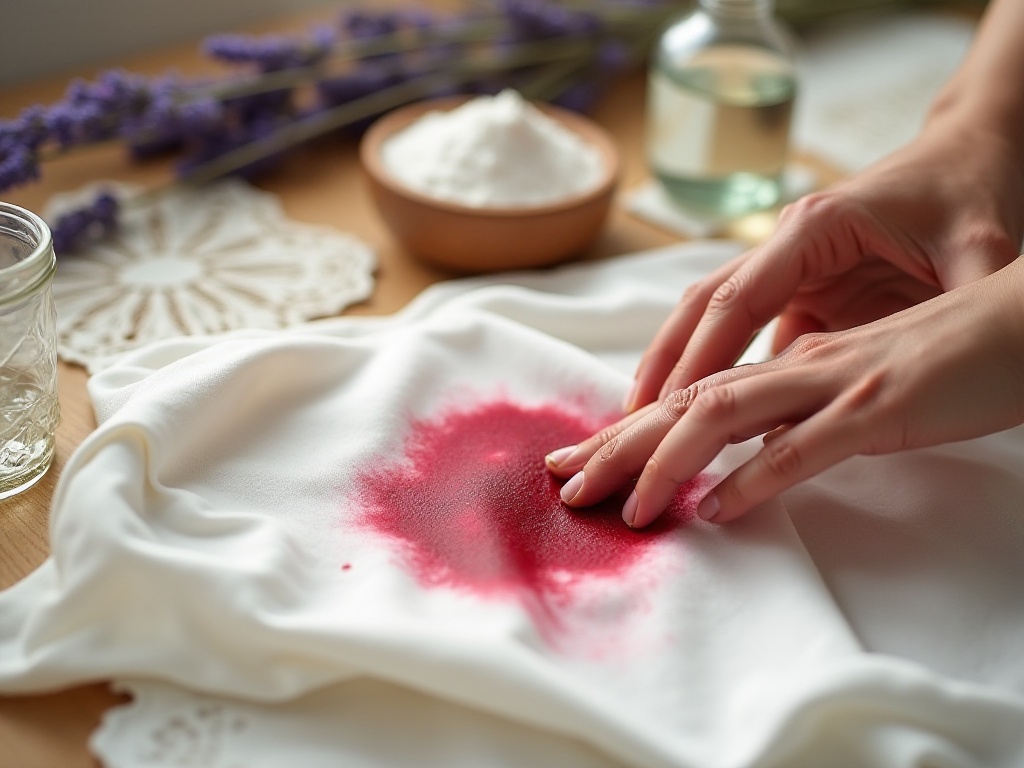Introduction
A few days ago, I found a white shirt I had worn for five years that was still brilliantly white - my friends thought it was new. Whenever asked about my maintenance secrets, I can't help but share what I've learned over the years. Last weekend while organizing my closet, I found a white shirt bought six months ago that had already turned yellowish and gray, looking like it had been worn for years. This stark contrast made me reflect: why do some clothes show their age while others stay looking new? After years of exploration and practice, I finally discovered the secrets.
Classification is Key
Many people have a misconception that doing laundry is as simple as throwing clothes in the washing machine, adding detergent, and pressing start. In reality, a garment's lifespan is determined from the moment you prepare to wash it. When I first started working, I was a laundry novice who often mixed all clothes together out of laziness. It wasn't until my favorite beige cashmere sweater was dyed light blue by jeans that I began to seriously study clothing classification.
Color sorting is quite sophisticated. I now separate clothes into three categories: pure white, light colors, and dark colors. Pure whites must be washed separately as they're most susceptible to dye transfer. Light colors can be washed together, such as beige, light pink, and light blue. Dark colors need further subdivision - denim should be washed separately, and black and navy should be separated as they tend to bleed. I have a habit of washing new dark clothes separately at least three times, as they bleed the most during these initial washes.
Fabric classification is equally important. I sort clothes by material into cotton, synthetic, silk, wool, and denim. Each fabric has unique characteristics requiring different washing methods. Cotton is durable and can use normal cycles; synthetics need quick wash to avoid high temperatures; silk is best hand-washed or using a special silk cycle; wool needs its special cycle with low temperatures; denim requires slow speed to reduce wear.
Weight classification is particularly crucial. I once made the mistake of washing a down jacket with knitwear, resulting in the knitwear being misshapen by the jacket's weight. Now I classify by weight: down jackets and heavy coats wash separately; sweaters and knitwear can go together; undergarments need separate handling.

The Art of Washing
Regarding washing methods, many people use too much detergent. My mother always said, "Add more detergent to get clothes cleaner." This is actually a misconception. Excess detergent not only fails to clean clothes better but leaves residue in fabric fibers, causing clothes to become stiff, yellow, and potentially causing skin allergies. After repeated testing, I found that half the recommended amount is sufficient.
Water temperature selection is crucial. Except for heavily soiled items, cold water is usually sufficient. Cold water not only protects fabrics but helps colors last longer. I used to think hot water cleaned better, but after noticing clothes fading quickly, I realized how much temperature affects clothing.
Detergent selection requires expertise. Different fabrics need different detergents - wool and silk require special neutral detergents. I choose based on fabric and soil level: regular detergent works for everyday clothes, but for sportswear or sweaty items, I use enzyme-based detergents with stronger cleaning power.
Beyond basic detergents, I use some tricks. For white clothes, I add half a cup of baking soda to enhance cleaning and brightness. Adding white vinegar when washing towels makes them fluffier and softer. These tips come from repeated experimentation.

Special Care
Everyone's wardrobe has some "delicate" items needing special attention. For silk garments, with their delicate fibers easily damaged by other clothes, I use special mesh bags and select the silk cycle or hand wash, keeping water temperature below 30 degrees to best protect the fabric.
Sweater care is particular. For precious wool sweaters, I hand wash them. First soak in warm water for 15 minutes, then gently squeeze without rubbing to prevent pilling. If machine washing is necessary, use the wool cycle and turn sweaters inside out to reduce wear.
Jeans present a common challenge. New jeans often bleed and fade. My method: before first wash, soak in salt water for 30 minutes to set the color; wash inside out in cold water on slow cycle; dry inside out away from direct sunlight. This helps maintain color longer.
The Art of Drying
Many think laundry ends with washing, but drying methods directly affect clothing longevity. I have a complete drying system: white and light clothes can be sun-dried for quick drying and sterilization; dark clothes should dry in shade to prevent fading; precious sweaters should dry flat, preferably on a dry towel to speed water absorption.
Hanger choice matters too. I use different hangers for different items: wooden hangers for suits and coats to maintain shoulder shape; curved plastic hangers for shirts; knitwear should be folded or laid flat rather than hung to prevent shoulder stretching.
Pay attention to drying details. Button up shirts before hanging to prevent wrinkles; use pants clips in inconspicuous places; keep underwear out of direct sunlight to prevent elastic deterioration. These small details help clothes last longer.

Storage Wisdom
Properly storing clean clothes is also an art. First, closets must stay dry. I regularly air out closets and use dehumidifiers and anti-mold sheets. Each seasonal clothing change includes thorough closet cleaning with vinegar water to prevent mold.
Folding methods matter too. I use the "vertical storage method": storing clothes vertically rather than traditional flat stacking. This saves space, makes retrieval easier, and provides clear visibility of all items. T-shirts and sweaters that easily lose shape are rolled to prevent creases while maintaining shape.
Seasonal clothing storage requires extra care. Winter down jackets must be thoroughly dried before storage and vacuum-packed. Sweaters need anti-moth bags with mothballs for protection.
Daily Maintenance
Good clothing habits are important. Now my first action upon returning home is hanging coats to air out rather than tossing them on the sofa. If I've sweated a lot, I air clothes before putting them in the laundry basket to prevent bacterial growth.
Address stains immediately. I carry a stain removal pen for immediate treatment of small stains. Different stains need different treatments: use talcum powder for oil stains; rinse fruit juice stains immediately with water; soak ink stains in milk.
Regular maintenance is crucial. Periodically de-pill sweaters with a professional tool; regularly polish leather shoes; deodorize and remove static from clothes. These small details accumulate to maintain clothes' freshness longer.

Final Reflections
After years of exploration and practice, I increasingly feel that caring for clothes is like caring for small lives. Each piece carries our memories and emotions, deserving careful attention. Proper care not only keeps clothes looking new but extends their lifespan, being both environmentally friendly and economical.
Actually, clothing care isn't just a household chore but a life attitude. It reflects one's love for life and attention to detail. When you treat each piece as precious, they reward you with their best condition. This serious approach to life is true living art.
In this era of sustainable development, making full use of each garment is responsible to both environment and self. I hope sharing these experiences helps more people learn scientific clothing care, keeping each piece vibrant longer.
Every detail in life deserves attention. When you start taking clothing care seriously, you'll find it's not just a simple chore but an art requiring continuous learning and practice. Let's work together to help our beloved clothes accompany us longer.
Related articles




